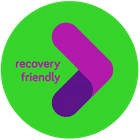Cymbalta, a brand name for duloxetine, is commonly prescribed for various mental health conditions, including depression, anxiety, fibromyalgia, and chronic pain from diabetic nerve damage. Although doctors consider it safe and effective, you may consider coming off the medication when symptoms improve. At this junction, Cymbalta withdrawal may become a problem that significantly impacts quality of life.
The last thing you want when discontinuing a medication meant to improve your life is pain. There are various ways to manage this transition and ensure any effects from Cymbalta withdrawal are minimal. At GateHouse Treatment, we are wellness and drug rehabilitation experts. We aim to give you the power, information, and treatment necessary to overcome all challenges.
In this article, we will explore the complexities of Cymbalta withdrawal, including its symptoms, duration, and strategies to manage this process effectively.
Understanding Cymbalta
Before diving into the intricacies of withdrawal, it’s essential to understand what Cymbalta is and how it works. You may be familiar with selective serotonin reuptake inhibitors (SSRIs). These are drugs commonly prescribed for treating depression, including well-known brands like Lexapro, Prozac, Zoloft, and Paxil. They do this by regulating and blocking the serotonin reuptake in the brain.
Serotonin is sometimes called “the feel-good” chemical due to its role in mood regulation. In a normal neural communication process, serotonin is released from one neuron and taken back up by another neuron for reuse. However, serotonin levels may be imbalanced in people with mood and anxiety disorders. SSRIs prevent serotonin reuptake, allowing more of it to remain in the synapse (the gap between neurons), leading to increased serotonin signaling.
Cymbalta is a selective serotonin and norepinephrine reuptake inhibitor (SSNRI). The primary difference between SNRIs and SSRIs is that SNRIs affect serotonin and norepinephrine, whereas SSRIs selectively target serotonin. Norepinephrine plays a role in mood regulation and the body’s stress response (fight or flight), so by inhibiting its reuptake, SNRIs provide a broader range of neurotransmitter modulation.
Cymbalta benefits many conditions, such as major depressive disorder, generalized anxiety disorder, and chronic pain syndromes. While many individuals find relief with Cymbalta, it’s essential to be aware that discontinuing the medication can lead to withdrawal symptoms, which can be challenging to navigate.
Cymbalta Withdrawal Symptoms
Over time, the brain and the body adapt to the presence of Cymbalta. Neurons and receptors may become accustomed to the medication’s influence on neurotransmitter levels. When you stop taking the drug, it takes time for these systems to readjust.
Cymbalta withdrawal symptoms can be distressing and vary in intensity and duration from person to person. Some individuals may experience mild symptoms, while others may face more severe challenges. Common withdrawal symptoms include:
1. Flu-like Symptoms: Many people feel Cymbalta withdrawal is comparable to the flu. These symptoms may include body aches, fatigue, chills, and sweating.
2. Nausea and Vomiting: The sudden stop of duloxetine confuses the digestive system. Gastrointestinal symptoms, including nausea and vomiting, can be a significant part of the withdrawal experience.
3. Headaches: A common complaint during Cymbalta withdrawal, they are often described as intense and persistent.
4. Dizziness and Vertigo: Individuals may experience dizziness, lightheadedness, and a spinning sensation, making it challenging to maintain balance and further contributing to stomach issues.
5. Emotional Turmoil: Since the brain was used to artificially higher neurotransmitter levels, your emotional regulation may need time to reach a new equilibrium. Common effects include irritability, mood swings, anxiety, and sometimes severe depression.
6. Brain Zap: Scientists don’t have an official name for this phenomenon, though a study published in The Primary Care Companion for CNS Disorders labels them sensory disturbances. Individuals who quit Cymbalta may feel an electric sensation in their brain and body resembling the tingling or burning from an electric shock. Per that same study, brain zaps can cause brief blackouts, dizziness, and disorientation.
7. Sleep Disturbances: According to the journal Progress in Neurobiology, serotonin plays a role in managing the sleep cycle. These withdrawal problems are prevalent, with some individuals experiencing insomnia or unusual dreams.
8. Cognitive Impairment: Returning to your prior neurotransmitter levels is a transition process, and our day-to-day cognition takes some time to recuperate. Cymbalta withdrawal can cause difficulty concentrating and memory problems.
The severity of these symptoms can vary widely. Withdrawal is a unique experience, and when dealing with tiny neurotransmitters, the exact response is difficult to predict. Some may experience the worst of it, while others will get through their day with mild fogginess.
Cymbalta Withdrawal Timeline
Since it is frequently dose-dependent, the withdrawal timeline for Cymbalta can differ for each individual. According to the Canadian Medical Association Journal, here is the pattern many serotonin-type medications follow:
1. Initial Symptoms (12-72 hours): If quitting abruptly, the withdrawal symptoms typically begin a few days after the last dose. Initially, these may be mild, but they can intensify rapidly.
2. Peak Symptoms (5-7 days): The most severe withdrawal symptoms usually peak within the first week after discontinuation. During this period, individuals may feel the worst symptoms described above and experience the most intense physical and emotional challenges.
3. Gradual Improvement (2-4 weeks): After the peak period, many individuals experience a gradual improvement in their symptoms. However, some may still face lingering issues, especially on the emotional and cognitive fronts.
4. Resolution (Varies): The complete cessation of withdrawal symptoms can take several weeks to months. Sometimes, people may experience intermittent symptoms even after initially resolving, though the severe physical effects subside.
Managing Cymbalta Withdrawal
Navigating Cymbalta withdrawal can be a daunting task, but it’s crucial to approach it with the right strategies and support in place. Here are some critical steps to help manage the withdrawal process effectively:
1. Consult Your Healthcare Provider: There is a reason why you were prescribed SSRNIs in the first place. Consult your doctor before changing your medication regimen, particularly if you were prescribed Cymbalta for nerve damage or chronic pain. They can steer you in the right direction and assemble a plan that minimizes withdrawal symptoms and ensures your safety.
2. Taper Gradually: Tapering is the most effective way to reduce the severity of withdrawal symptoms. Your healthcare provider will guide you through a tailored tapering schedule that can last several weeks or months. During this period, you will be reducing the dose. You still might feel some of the symptoms and general malaise, but nowhere near as harsh as quitting cold turkey.
3. Monitor Your Symptoms: Make notes of your symptoms, when they start, stop, and endure. These pointers can help you track your progress and communicate effectively with your healthcare provider.
4. Stay Hydrated and Maintain a Balanced Diet: Proper nutrition and hydration are crucial during withdrawal. Individuals feel weak, drained, unfocused, moody, and uninterested in their surroundings. Nutrient-rich foods can help support your body as it sweats and adjusts to the absence of Cymbalta.
5. Exercise and Physical Activity: Engaging in regular physical activity can help improve mood and reduce the intensity of some withdrawal symptoms, such as anxiety and depression. According to a survey conducted in The Journal of Psychiatry Neuroscience, exercise is one of the demonstrable non-drug ways to increase serotonin, which your body craves when you quit.
6. Seek Emotional Support: Quitting shouldn’t be a lonely experience, and withdrawal can make individuals act out of character and reach for the drug they are trying to quit—contact friends, family, or support groups to share your experiences. Emotional support can make a significant difference.
7. Prescribed Medications: Sometimes, healthcare providers may prescribe other medications to help manage specific withdrawal symptoms, such as anti-nausea or short-term sedatives.
8. Avoid Alcohol and Recreational Drugs: One of the pitfalls of withdrawal is the plight of self-medication. Whether to replace one substance with another, sleep through troubles, or induce limited chemical happiness, substances can exacerbate withdrawal symptoms and interfere with recovery. You don’t want to leave withdrawal with a new addiction. It’s essential to avoid unhealthy, intoxicating drugs during this time.
9. Professional Counseling: Having people in your corner is always better. Consider seeking the help of a therapist or counselor who specializes in withdrawal management. GateHouse Treatment can provide support to address any emotional or physical withdrawal challenges.
GateHouse Treatment and Successfully Recovering
What makes GateHouse Treatment the leader in drug rehabilitation is our ethos that addiction and withdrawal aren’t just symptoms a doctor checks on a clipboard. Underlying addictions are life experiences, triggers, and emotional turmoil that any treatment plan should address. This commitment to holistic health and individualized attention can get you over any hurdle, no matter how powerful you feel your addiction is.
We offer outpatient, intensive outpatient, partial hospitalization, medication management, family counseling, and many other services tailored to your needs at our Nashua, New Hampshire clinic. Call 855-448-3588 or reach out for a free consultation to take control of your life.
- Cymbalta Withdrawal: Causes, Symptoms, And Management - October 12, 2023
- Boredom in Recovery: 5 Tips to Avoid Relapse - October 6, 2023
- Overconfidence and Rehab: Avoiding Relapse - October 4, 2023




